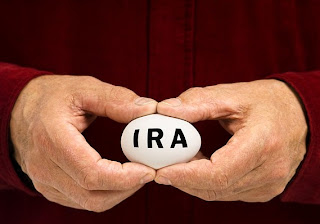It might sound hard to believe, but amazingly enough, we are just a few days away from the start of April. Its first day, Monday, April 1st, is known as April Fool’s Day to many, but to those in the retirement world, it’s better known as the required beginning date. Unfortunately, this date often causes a great deal of confusion for pre- and post-retirees, so with that in mind, below we explore 5 key facts you need to know about the April 1st deadline. Make sure you know these rules well, or come April Fool’s Day, the joke might be on you.

1) April 1st of the year following the year you turn age 70 ½ is known as your required beginning date (RBD). Therefore, April 1, 2013 is your required beginning date if you turned 70 ½ in 2012. The required beginning date is the absolute latest date you can wait to take required minimum distributions (RMDs) from your IRA without possible penalties, so if you turned 70 ½ in 2012 and have not yet taken an RMD from your IRA, you only have a few days left to do so without potentially incurring a 50% - yes, that’s right, a FIFTY percent penalty. The penalty applies even if you’re one day late.
2) Generally speaking, if you take an RMD in any one year, you calculate that RMD in part, by looking back to the previous year’s December 31st balance. For instance, most RMDs being taken in 2013 are calculated using the December 31, 2012 balance. However, if you turned age 70 ½ in 2012 and waited until 2013 to take your first RMD, you must calculate that RMD using the December 31, 2011 balance. Why? Quite simply, even though you’re taking the RMD now, in 2013, it’s still the RMD for 2012, making the 2011 year-end balance the correct figure to use. And remember, you will still have to take an RMD in 2013 for 2013. That 2013 RMD will, of course, be calculated using your December 31, 2012 IRA balance. Note: If you take two RMDs in 2013, you will be taxed on both of them for 2013.
3) April 1st of the year after you turn 70 ½ is always your required beginning date for IRAs, including SEP IRAs and SIMPLE IRAs. You may, however, have a different required beginning date for certain employer plan assets. For instance, if you are still working for a company where you have a 401(k) or similar plan and don’t own more than 5% of the company, you may not have to take an RMD until the year you retire, even if you’re over 70 ½ already. That would make your required beginning date April 1st of the following year.
4) April 1st of the year following the year you turn 70 ½ is the required beginning date for your own IRAs, but not inherited accounts. If you were someone’s designated beneficiary (i.e. named on their beneficiary form) and inherited an IRA, your required beginning date is generally December 31st of the year after their death. Different rules may apply if the deceased person was your spouse.
5) If you have name designated beneficiaries on your IRA beneficiary form (i.e. your spouse or children), whether or not you die before or after your required beginning date makes no difference on how those beneficiaries will calculate RMDs. If, however, you name a non-designated beneficiary (i.e. a charity or your estate) or your money ends up with one because you failed to name a beneficiary, the rules for calculating inherited IRA RMDs are different depending on whether you die before your required beginning date or not. If you die before your required beginning date, non-designated beneficiaries have to distribute all funds within five years of death. If you die on or after your required beginning date, those beneficiaries must distribute the funds over your remaining life expectancy (had you lived… I know, it’s weird) or sooner.
- By Jeffrey Levine and Jared Trexler
5 Facts About the April 1 Required Beginning Date
Wednesday, March 27, 2013
No comments
Mailbag
Thursday's Slott Report Mailbag

Consumers: Send in Your Questions to [email protected]
Q:
Can I transfer money from my IRA to my husband's Roth IRA? I am 35, and he is 36.
Thank you!
Gail Clements
A:
No. The only way your IRA funds can be transferred to your husband’s IRA is in a divorce or after your death. Even then, it would have to be transferred to a similar IRA, for example an IRA to IRA or a Roth IRA to another Roth IRA. In this case, you cannot transfer your IRA into your husband’s Roth IRA.











0 comments:
Post a Comment